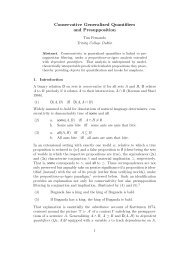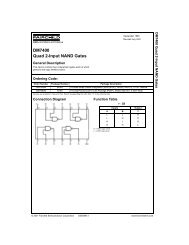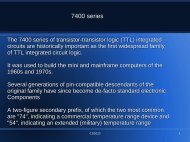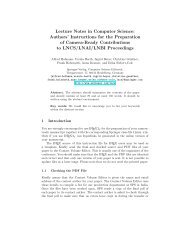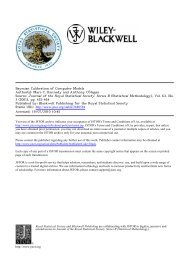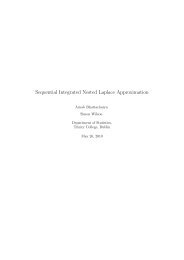Real-time Communication in Vehicular Ad Hoc Networks (VANETs)
Real-time Communication in Vehicular Ad Hoc Networks (VANETs)
Real-time Communication in Vehicular Ad Hoc Networks (VANETs)
Create successful ePaper yourself
Turn your PDF publications into a flip-book with our unique Google optimized e-Paper software.
2.3 <strong>VANETs</strong><br />
With the development of Intelligent Transportation System (ITS), <strong>Vehicular</strong><br />
<strong>Ad</strong>-hoc <strong>Networks</strong> (<strong>VANETs</strong>) become an emerg<strong>in</strong>g research area. As a specific<br />
type of MANETs, <strong>VANETs</strong> have some similar characteristics to MANETs, e.g.<br />
short radio transmission range, low bandwidth, omnidirectional broadcast<br />
and limited storage capacity [10][22].<br />
In addition to these similarities, the communication <strong>in</strong> <strong>VANETs</strong> meets some<br />
particular challeng<strong>in</strong>g characteristics:<br />
1) Rapid topology changes;<br />
2) Frequent network partition;<br />
3) Small effective network diameter;<br />
4) Limited redundancy <strong>in</strong> <strong>time</strong> and <strong>in</strong> function.<br />
5) Position predictability<br />
6) Relatively sufficient power<br />
Position predictability and relatively sufficient power may be utilized to give<br />
support to <strong>in</strong>ter-vehicle and vehicle-to-roadside communication, while rapid<br />
topology changes, frequent network partition, small effective network<br />
diameter and limited redundancy <strong>in</strong> <strong>time</strong> and <strong>in</strong> function aggravate the<br />
difficulties to communication <strong>in</strong> <strong>VANETs</strong>.<br />
8




